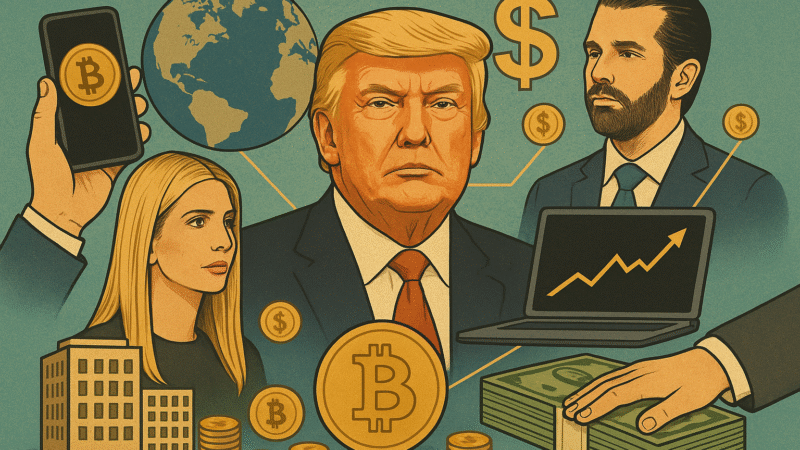SEC’s Delay On Ethereum ETF Decision Sparks Investor Reactions: What It Means For The Crypto Market In 2025?
Introduction
The U.S. Securities and Exchange Commission (SEC) has once again postponed its decision on a series of Ethereum exchange-traded fund (ETF) applications, creating ripples across the cryptocurrency landscape. This delay has triggered a wave of speculation, investor uncertainty, and market volatility. As the industry continues its relentless push toward institutional adoption and regulatory clarity, this move by the SEC marks a critical moment for Ethereum and the broader digital asset ecosystem.
In this long-form analysis, we will unpack the key aspects of the SEC’s delay, its short-term and long-term implications for Ethereum, how it affects investor sentiment, and what it signals about the future of crypto regulation in the United States. We will also explore historical parallels with the Bitcoin ETF timeline, institutional perspectives, and what traders and developers should be watching in the coming weeks.
A Recap Of The SEC’s Ethereum ETF Decision Delay
On May 24, 2025, the SEC issued a formal announcement postponing its decision on multiple Ethereum spot ETF proposals, including applications submitted by leading firms such as BlackRock, Fidelity, Grayscale, and VanEck. These proposals, which have been under review since early 2025, represent the next big step in integrating crypto into traditional financial markets.
According to the SEC, the delay is intended to allow for “further public comment” and internal regulatory evaluation. This mirrors a pattern seen during the long approval process for Bitcoin ETFs, which faced repeated delays before finally being greenlit in 2024. At the core of the hesitation are concerns about market manipulation, custody safeguards, and a lack of comprehensive legislation surrounding Ethereum’s classification as a commodity or security.
Market Response: Ethereum Price And Volatility
The market reaction to the delay was swift. Ethereum (ETH), which had been trading steadily around $3,400 in anticipation of positive regulatory news, dropped nearly 5% in the 24 hours following the SEC’s announcement. Traders interpreted the delay as a setback in Ethereum’s journey toward mainstream financial integration.
This drop wasn’t catastrophic, but it sent a clear message. Investors are increasingly sensitive to regulatory signals. While previous years saw the crypto market rally on hype and technical developments, 2025 has been characterized by a more mature, cautious investment environment where regulation and institutional entry hold more sway.
Investor Sentiment: A Shift Toward Caution
Retail and institutional investors alike are showing signs of growing cautiousness. The delay has undermined some of the bullish momentum Ethereum had been building since the start of the year. Analysts at CoinDesk and Investing.com note that many funds had already priced in a mid-year approval of at least one Ethereum ETF.
The SEC’s hesitancy has also raised questions about whether Ethereum’s proof-of-stake model and its complex DeFi ecosystem are complicating its pathway to ETF approval. Some critics argue that Ethereum’s more programmable nature compared to Bitcoin makes it a tougher regulatory puzzle.
As a result, many investors are adopting a wait-and-see approach. Institutional buying has slowed, and options data suggests increased hedging activity among crypto-focused portfolios.
Ethereum Vs Bitcoin: A Regulatory Comparison
To understand the significance of the SEC’s delay, it’s helpful to compare it with the Bitcoin ETF approval process. Bitcoin ETFs took more than a decade to receive approval, largely due to concerns about market maturity, security, and manipulation.
However, Bitcoin benefited from a relatively straightforward use case — digital gold — and a longer history of being treated as a commodity by U.S. regulators. Ethereum, on the other hand, operates as a decentralized world computer, enabling smart contracts, DeFi protocols, NFTs, and more. This complexity makes its regulatory classification a point of ongoing debate.
While Bitcoin ETFs opened the door for institutional crypto products, Ethereum ETFs are seen as the litmus test for whether broader digital asset innovation can be embraced by traditional finance.
Institutional Outlook: Hope Amid Delays
Despite the delay, major financial institutions remain committed to the Ethereum ETF path. BlackRock, Fidelity, and others have reiterated their belief that Ethereum will eventually receive regulatory approval and that its integration into ETF structures is inevitable.
Some experts argue that the SEC is buying time not to reject the ETFs, but to ensure they are approved under the right conditions — with adequate investor protections, better custody solutions, and improved transparency.
This patient optimism suggests that while the delay is frustrating for traders, it doesn’t mark the end of Ethereum’s institutional aspirations. Rather, it reflects the growing pains of an asset class maturing under regulatory oversight.
Legal And Regulatory Perspectives
From a legal standpoint, the SEC’s delay may also be strategic. With increasing political pressure, rising public interest in crypto regulation, and ongoing debates within Congress about how to define and regulate digital assets, the Commission is treading carefully.
The SEC’s chair, Gary Gensler, has repeatedly stated that investor protection is paramount. Critics argue this cautiousness borders on obstruction, but others see it as a necessary step to ensure a robust and fair framework is established before ETFs linked to complex digital assets like Ethereum are approved.
In parallel, legislation such as the Digital Asset Market Structure Act and the Token Taxonomy Act — both under consideration in Congress — could reshape the SEC’s regulatory role and influence ETF decisions going forward.
The Broader Impact On The Crypto Ecosystem
The implications of the delay go beyond Ethereum alone. It has also affected related sectors, including:
DeFi protocols built on Ethereum, many of which saw a dip in user activity and TVL.
Layer 2 solutions, like Arbitrum and Optimism, which are closely tied to Ethereum’s scalability.
Ethereum-based tokens such as Chainlink, Uniswap, and Aave, which saw short-term price corrections following the announcement.
The delay has also reignited a broader conversation about U.S. crypto policy and whether the country is falling behind in the global race to regulate and integrate digital assets.
Short-Term Vs Long-Term Outlook
In the short term, uncertainty will likely dominate the Ethereum narrative. Traders may shift their focus to other catalysts such as Layer 2 development, ETH staking metrics, and upcoming protocol upgrades.
However, the long-term view remains optimistic. Institutional appetite for Ethereum exposure is not disappearing. As more infrastructure is built around Ethereum’s ecosystem — from custody solutions to tax reporting tools — the case for an ETF only strengthens.
Key Takeaways
The SEC has delayed its decision on several Ethereum ETF proposals, citing the need for further review.
ETH price dropped around 5%, reflecting investor anxiety and shaken confidence in regulatory momentum.
Institutional players remain optimistic, believing that approval is inevitable but delayed for safety and structure.
Regulatory clarity is key, and future legislation may play a pivotal role in Ethereum’s ETF journey.
The delay impacts the entire Ethereum ecosystem, including DeFi, Layer 2s, and Ethereum-based tokens.
Final Thoughts
The SEC’s decision to delay approval of Ethereum ETFs is not just a bureaucratic hiccup — it’s a defining moment in crypto’s evolution. Ethereum stands at the crossroads of innovation and regulation. How it navigates this terrain will determine its trajectory in the institutional finance landscape.
While investors may be disappointed in the short term, this delay could ultimately pave the way for a more comprehensive, legally sound entry of Ethereum into traditional financial markets. The key for now is patience — and a clear-eyed view of the bigger picture.



